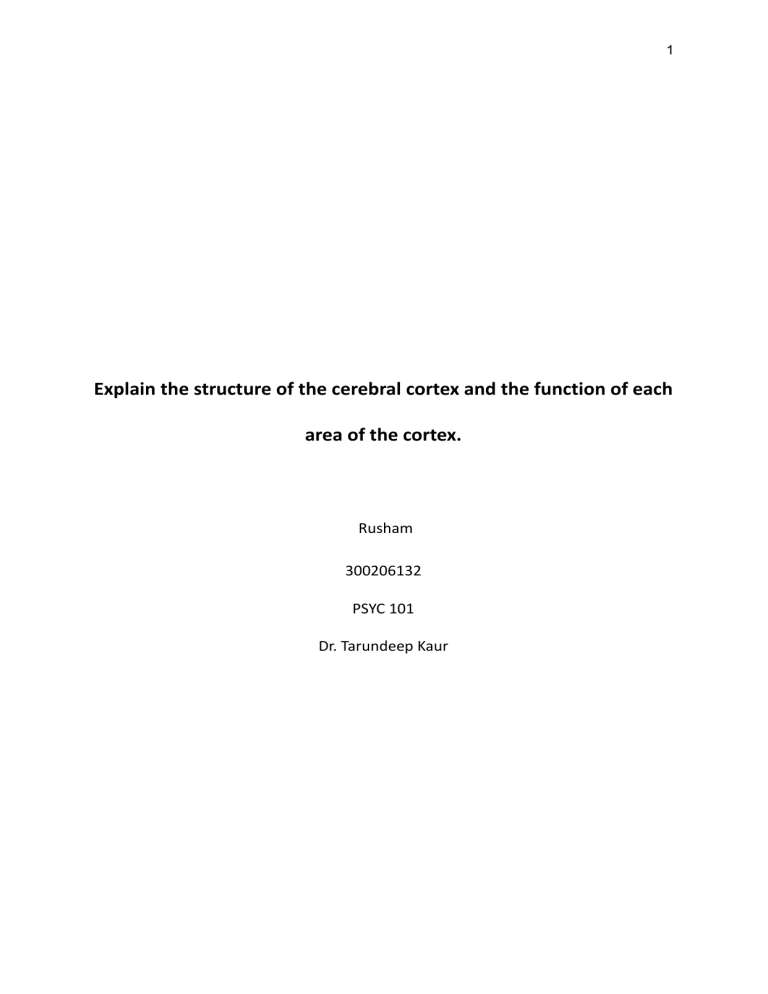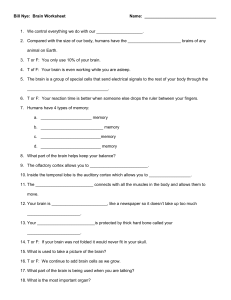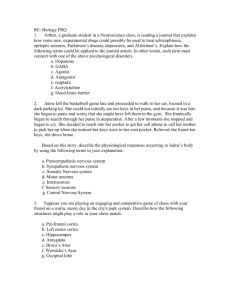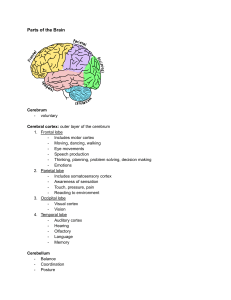
1 Explain the structure of the cerebral cortex and the function of each area of the cortex. Rusham 300206132 PSYC 101 Dr. Tarundeep Kaur 2 Making up more than 80% of the human brain, the cerebral cortex is what makes humans different from animals as humans have a larger cerebral cortex than the latter (Stagnor & Walinga, 2014). This part of the brain holds the responsibility for many high-level cognitive functions such as decision-making, perception, language and other motor skills (Cadwell et. al, 2019). The cerebral cortex, even though being a bark-like structure on the outer layer of the brain, it aids in learning specific intricate skills, socializing and developing tools. Moreover, the human brain’s cerebral cortex contains wrinkles and folds which is considered as an activity known as ‘Corticalization’, unlike the average animal which is smooth and thus provides the former with more area and a greater capability to comprehend, think and retain (Stagnor & Walinga, 2014). Containing approximately 16 billion neurons, it has a billion more glial cells, or glia, to support the said neurons. The glial cells surround the neurons and link with them in order to protect them, supply them with useful nutrients and go even one step further by taking in unused neurotransmitters (Stagnor & Walinga, 2014). For example, the myelin sheath on the sides of the axon of neurons is a type of glial cell. The cerebral cortex is divided into two hemispheres, namely the right and the left hemisphere. Making up these two hemispheres individually, are four different lobes. They are the frontal lobe, the parietal lobe, the occipital lobe and the temporal lobe (Stagnor & Walinga, 2014). They all exhibit different functions ranging from being responsible for thinking, planning, and memory by the frontal lobe, to being responsible for sensing touch and processing that information by the parietal lobe, with the occipital lobe processing visual information and the temporal lobe processing hearing (Stagnor & Walinga, 2014). Consisting of two hemispheres, the cerebral cortex also follows a general principle that is contralateral control, which says that the left hemisphere controls the right side of 3 the body and vice-versa (Stagnor & Walinga, 2014). However, it also has numerous parts of the cortex with different functions for each of them. The first one is the motor cortex, which takes control of the movement of the body by sending signals to the cerebellum and the spinal cord (Stagnor & Walinga, 2014). Next comes the somatosensory cortex, which is sensitive to touch sensations and works on the movement of the body parts accordingly (Stagnor & Walinga, 2014). The visual cortex processes any visual information and the auditory cortex is responsible for the processing of hearing and language (Stagnor & Walinga, 2014). The remaining cortex is entirely made up of association areas and helps in more complex mental functions. Thus, the cerebral cortex can be considered the key to evolved intellect in humans (Stagnor & Walinga, 2014). 4 References Cadwell, C. R., Bhaduri, A., Mostajo-Radji, M. A., Keefe, M. G., & Nowakowski, T. J. (2019). Development and arealization of the cerebral cortex. Neuron, 103(6), 980-1004. Stangor, C.(2014, October 17). Introduction to Psychology- 1st Canadian Edition. Pressbooks. https://opentextbc.ca/introductiontopsychology/








